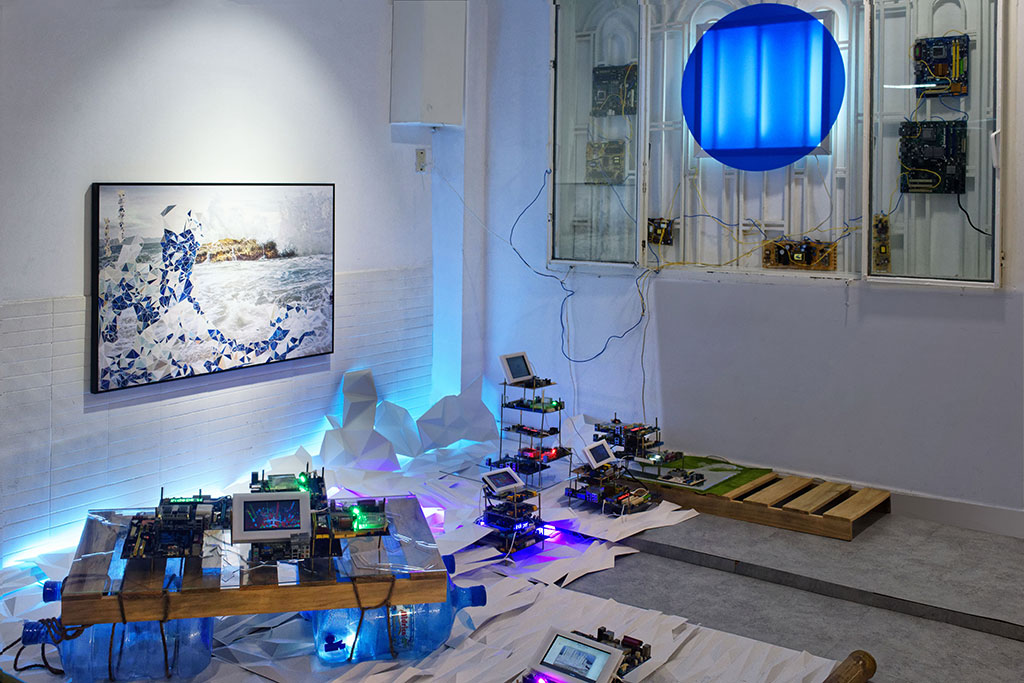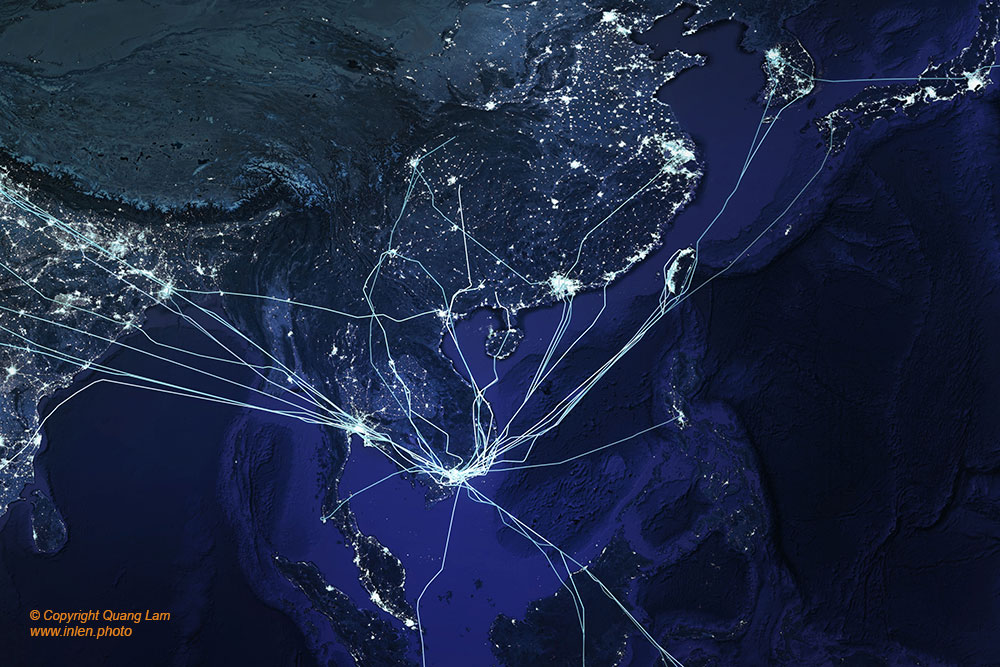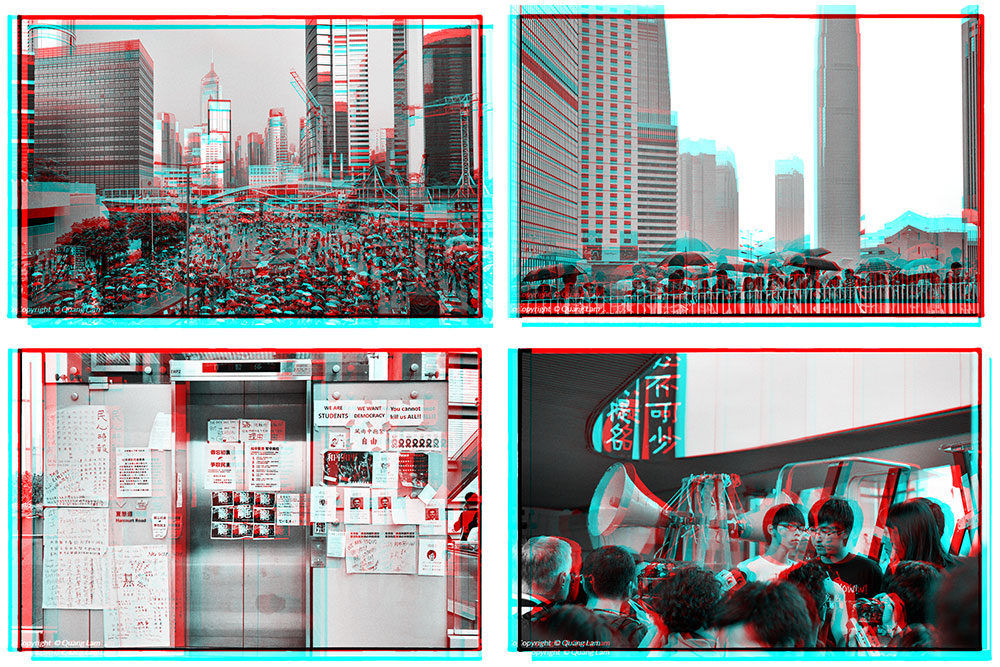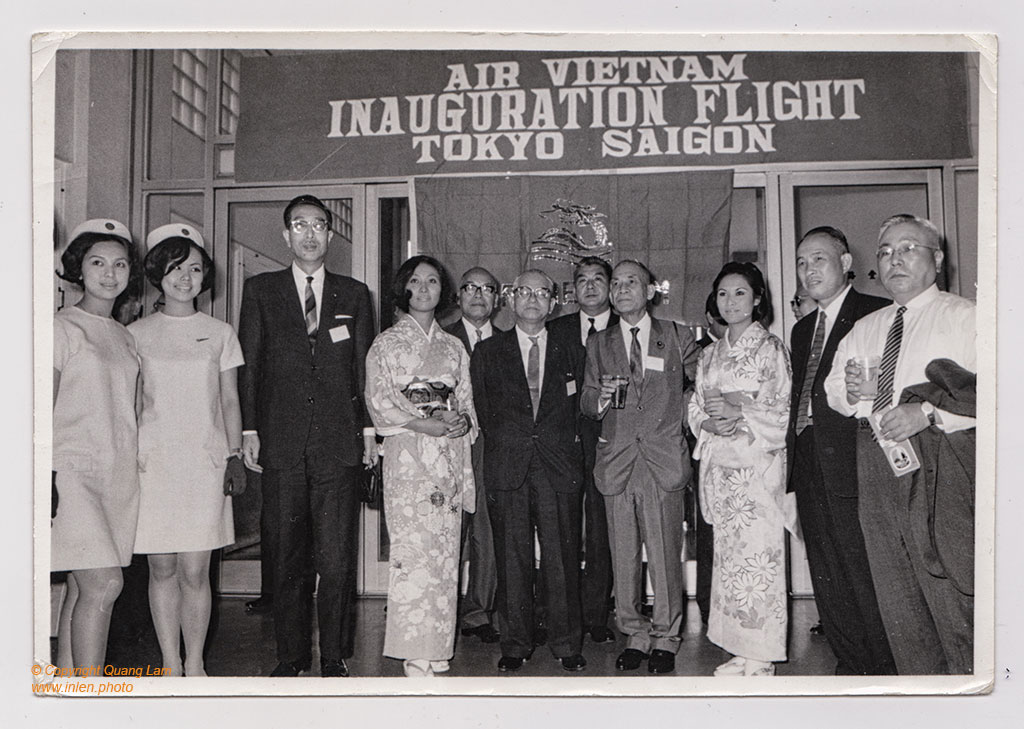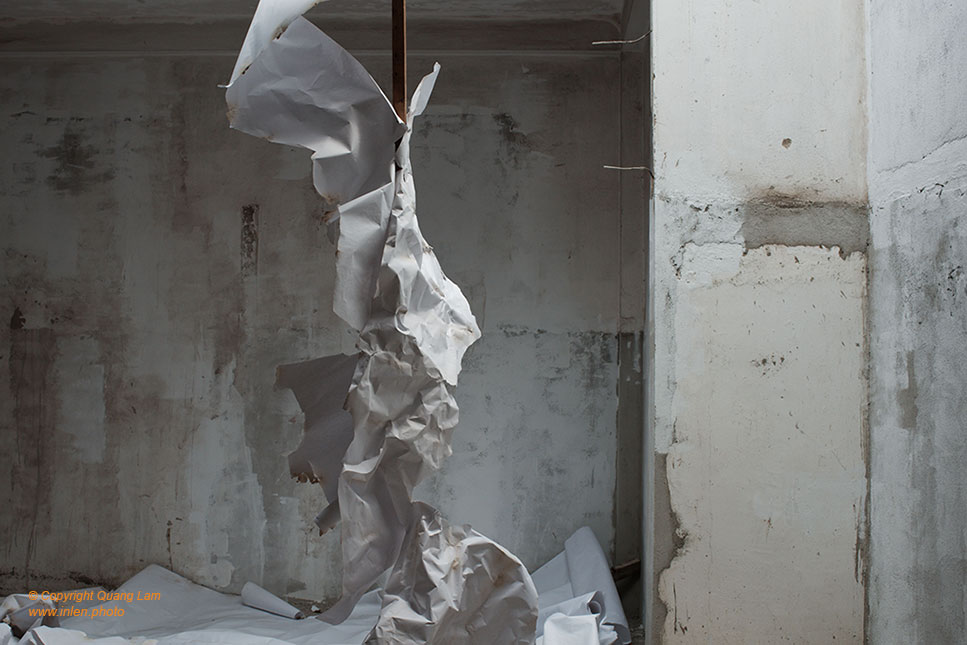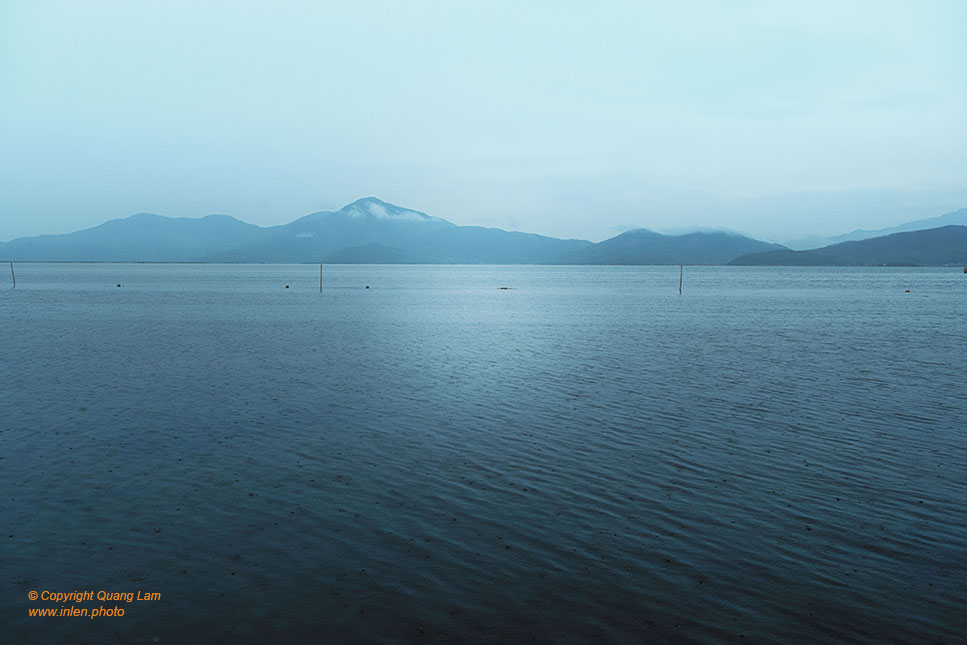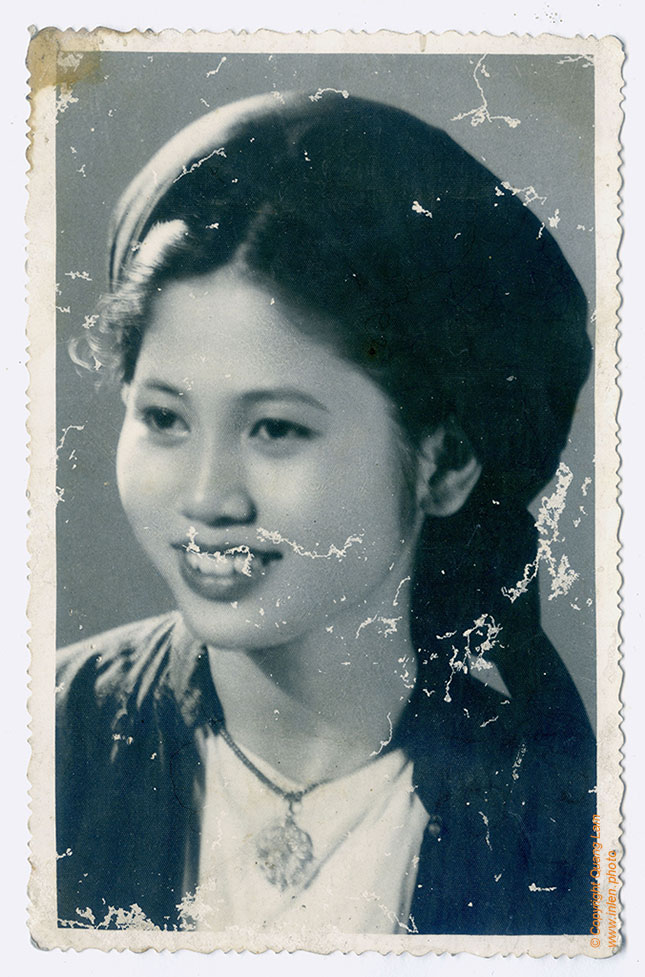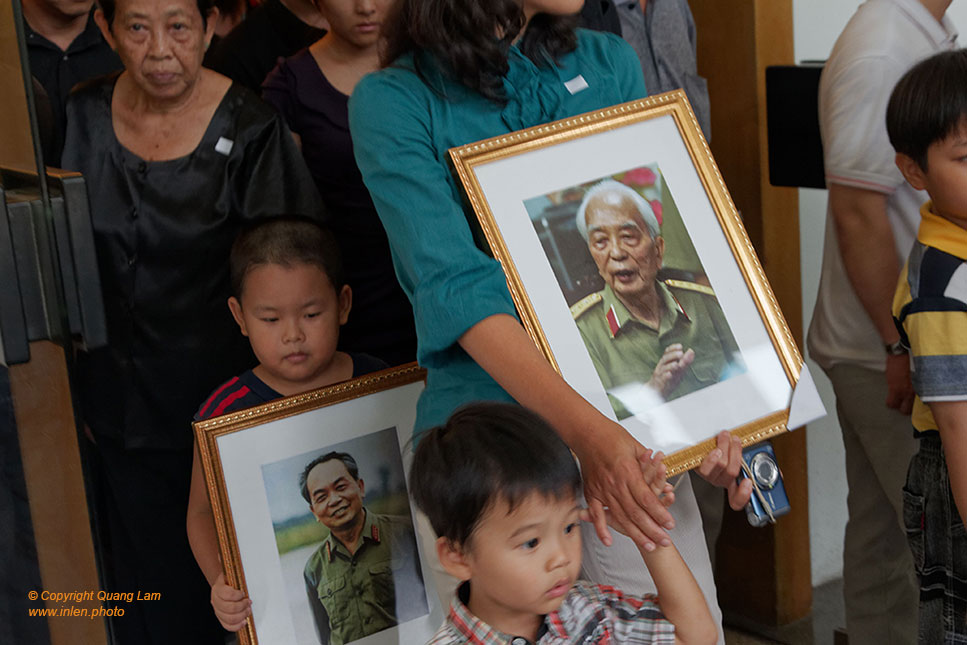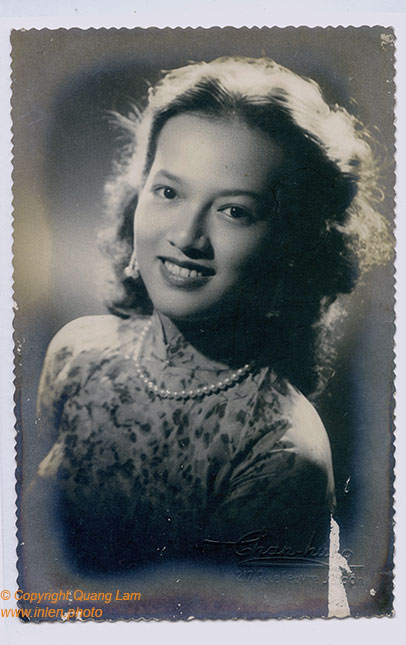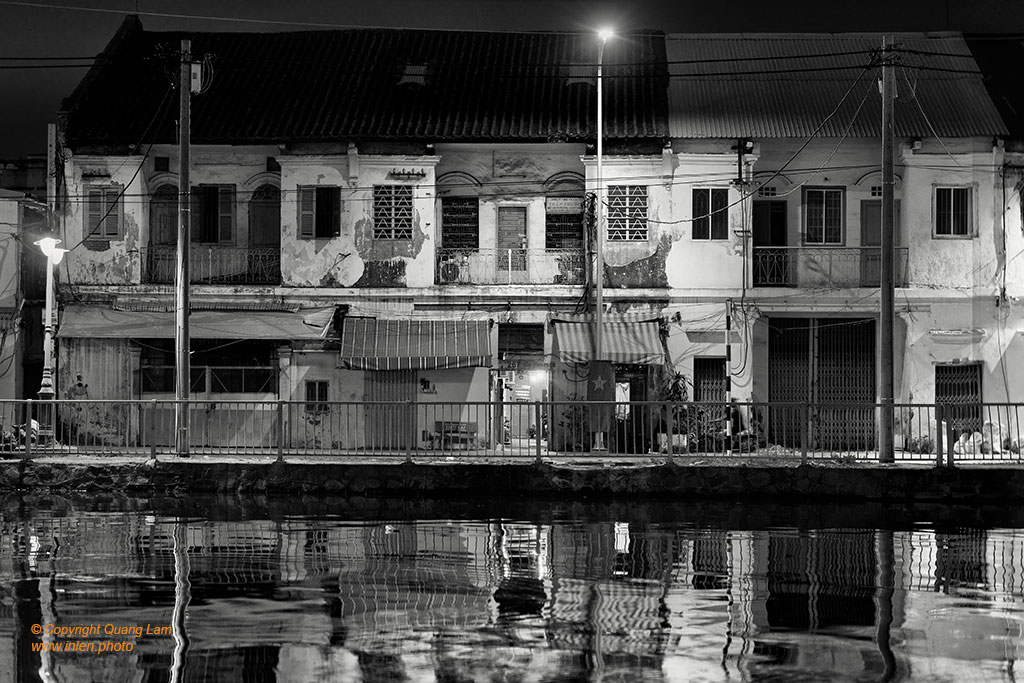“This show will explore the dynamic interaction between XEM’s artworks, innovative installation concepts, and viewer engagement, creating a lively and evolving environment. Be part of it to experience the energy and creativity that XEM brings to the forefront of contemporary photography, as they continue to redefine the medium’s role in both archival truth and fictional creation.” Text by Vin Gallery
Visual artist Quang Lam explores the relationship between maps and territory. It is encapsulated in the famous expression “the map is not the territory,” coined by Polish-American philosopher Alfred Korzybski.
[…]
Statement by the visual artist Quang Lam
“The Autograph Collection Hotels, in collaboration with Vinpearl Landmark 81, has launched the visionary project “Gallery in the Sky.” I would like to cultivate the values of international connections and exchanges, leveraging the unique setting of Vinpearl Landmark 81. My vision for “Gallery in the Sky” involves capturing captivating photographs of airplanes arriving from all corners of the globe, visible from the hotel. But invisible, they are like “Air Flows”.
[…]
This series captures the raw sequence by the photographer Quang Lam of events from October 5th to 12th, 2014. Organized in the style of black and white contact sheets, this presentation immerses viewers in the days when Hong Kong’s youth sought to take control of their future. Led by the 18-year-old Joshua Wong (visible in contact sheet number #5), the students occupied for two months the heart of Hong Kong in the Admiralty zone, where government buildings are located.
[…]
INTERNATIONAL FLIGHTS – PERIOD 1951 – 1962
Vietnam Airlines used part of its commercial rights to develop international routes to Phnom Penh, Bangkok, Vientiane, Hong Kong and Singapore, which Air France has reestablished from 1946 to 1949.
In 1952, by DC-3, there was a daily flight to Saigon-Phnom Penh, a weekly flight to Saigon-Bangkok, then a seat added to Siem Reap around 1956, two flights to Saigon-Seno-Vientiane; By DC-4, there were two weekly flights to Saigon-Hanoi-Hong Kong and Saigon-Haiphong-Hong Kong,
[…]
In cartography, terra incognita refers to regions that have not been mapped or documented. The expression is believed to have first appeared in Ptolemy’s Geography around 150 CE1. It denotes unexplored or unfamiliar territories. Interestingly, the phrase has also been used metaphorically to describe any uncharted subject or field of research
This series captures the in-situ construction of a Terra Incognita that unfolded over several months. In an exposed ruin, buffeted by rain and wind,
[…]
The inspiration for this series is drawn from “The Tale of Từ Thức Marrying a Goddess,” a story that delves into the life of Từ Thức during the Trần dynasty. He encounters and weds a goddess in the divine realm, only to later depart from his celestial spouse to revisit his hometown. Unbeknownst to him, countless ages have transpired in the mortal world during his absence.
Set in Hue, amidst the tranquil lagoon of Tam Gian,
[…]
Migration and the Geneva Accords
After the 1954 Geneva Accords divided Vietnam into North and South, there was a 300-day period (ending on May 18, 1955) during which Vietnamese people could freely choose their place of residence.
A massive migration occurred, with approximately 1 million people moving from the north to the south and around 50,000 people moving from the south to the north.
The unexpected migration prompted the North Vietnamese government to block roads,
[…]
On May 7th of this year 2024, we commemorate the 70th anniversary of the battle of Dien Bien Phu. This article highlights the military events and the Geneva conference that opens at the same time as the final days of a battle taking place thousands of kilometers away, the outcome of which is eagerly followed by the French media.
The Geneva Conference of 1954 was a conference that took place in Geneva, Switzerland,
[…]
The portraits in this collection were given by students to their professor at the end of their instruction in the 50s. The written words on the back primarily serve as a formal farewell and provide information about their names and the dates, allowing us to identify the individuals. Fortunately, within one specific portrait, the student also included the name of the Nguyen Van Khue School.
Professor Huỳnh Công Ân says : “From its inception in 1940, Nguyen Van Khue School stood as one of the largest private schools in Cochinchina during the French colonization period.
[…]
The historical aftermath of the Qing Dynasty’s overthrow of the Ming Dynasty in 17th-century China led to Ming loyalists seeking refuge in Southeast Asia. In Vietnam, these Chinese immigrants played a pioneering role during the “March to the South.” They settled in Bien Hoa. By the late 18th century, to escape the massacres perpetrated by Tay-son troops, the community regrouped in the present-day location of Cholon, situated 11 kilometers away from the center of Saigon,
[…]
